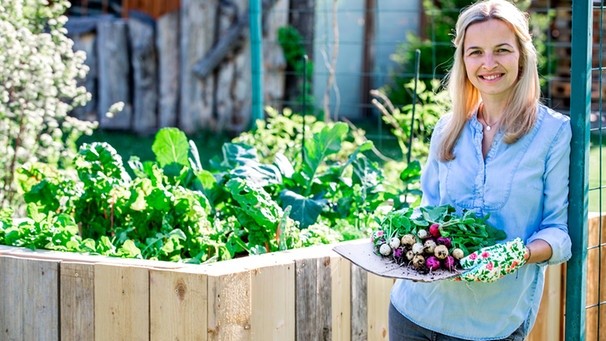What layers do you need and how to fill the raised bed to get a great result?
Raised bed layers
The raised bed becomes high because of the different layers of rich material that are stacked on top of each other. Those who want to use the raised bed for growing vegetables should plan on five layers. “For a raised bed that is mainly used for herbs and/or ornamental plants, the scheme is simplified,”
In this case, only three different layers are necessary.
Cover for the raised bed
A raised bed can also easily be turned into a cold frame – with a cover that can be made from old windows, for example.
Advantages raised bed
A raised bed not only looks pretty, it also provides perfect conditions for plants in a small garden. Through the different layers herbs, flowers or vegetables are optimally supplied with nutrients. Whether you choose an ornamental or a utility bed is entirely up to your taste.
One of the advantages of a raised bed is that working on it is much easier on the back than with “normal” beds at ground level. “You don’t have to bend your knees and can work quite comfortably standing up,” says BAYERN 1 plant expert Karin Greiner. Another advantage is that you can get to the raised bed from all sides and can identify potential problems or pest infestations more quickly.
The rotting of the layered material generates heat, and at the same time the different layers provide the plants with particularly high levels of nutrients. “As a result, I can harvest about three times as much from a raised bed as from a normal bed,” says plant expert Greiner. But the high nutrient density also ensures that you can plant the plants much more densely than in a normal bed.
Fill raised bed
These layers need to be in a raised bed from the bottom up:
Vole grid: the grid protects soil and plants from rodents and other intruders.
Coarse pruning: for example, branches and shrubbery waste, about 25 to 30 cm high. They provide good aeration and prevent waterlogging.
Fine woody debris: shredded material, for example twigs, finely cut hedge trimmings and shredded shrub residues, about 15 to 20 cm high. The layer forms a kind of barrier and prevents the upper layers from slipping through.
Rotted manure or coarse compost: The layer should be about 20-30 cm high and provides a lot of rotting heat and nutrients.
Rotted compost: For this layer a height of about 10 cm is sufficient, it provides a lot of nutrients.
Soil/plant substrate: you can fill this layer up to the top. It is the top layer and is used for planting.
Raised bed in winter
At the latest, when the last cabbage plants clear the raised bed at the end of winter, it will catch your eye: the fill level of the bed has sagged, due to the rotting process in the lower layers, the surface has sunk by 10 to 20 centimeters. If you haven’t already harvested your raised bed in the fall and refilled it with soil, the beginning of spring is a good time to do so.
Refill raised bed
To refill your raised bed, first push aside the top, fine-crumb layer of soil. Then shovel in compost or even seasoned horse droppings (just check with a nearby riding stable), spread it out, and push the potting soil back over the top until smooth. If you don’t have your own compost, you can buy it at a garden center; or even easier, buy a compost-soil mix and pour it directly on top of the raised bed.
Tip: If you mulch throughout the year, that is, keep the soil covered with plant material (grass clippings, leaves, vegetable scraps, etc), new humus will form and you will reduce the bagging effect.


